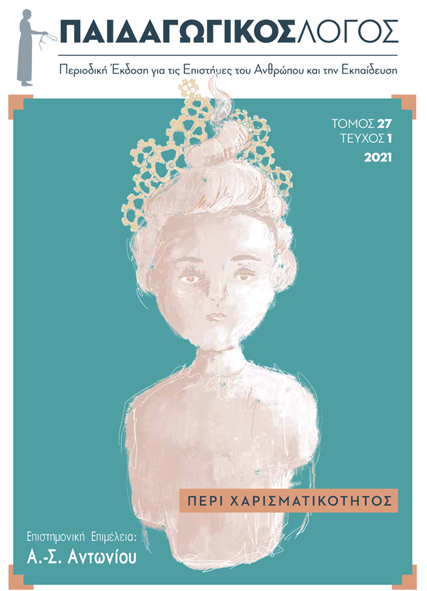Ο Ρόλος των Βιολογικών και Γενετικών Παραγόντων στο Επίπεδο της Ευφυΐας

Περίληψη
Πολλοί ερευνητές έχουν στραφεί στη μελέτη του εγκεφάλου ως τη βάση της θεώρησης της νοημοσύνης και της μέτρησής της. Πολλές πτυχές της ανατομίας του εγκεφάλου και της Φυσιολογίας έχουν προταθεί ως ενδεχομένως σχετικές με τη νοημοσύνη. Οι διακλαδώσεις των νευρώνων στον εγκεφαλικό φλοιό, ο μεταβολισμός της εγκεφαλικής γλυκόζης, η ταχύτητα μεταφοράς νευρικών σημάτων αποτελούν κάποιους από τους παράγοντες της Φυσιολογίας που έχει βρεθεί ότι σχετίζονται με τη νοημοσύνη. Σχετικά με τη γενετική προέλευση της νοημοσύνης, αποτελέσματα ερευνών δείχνουν κυρίως ότι η κληρονομικότητα ασκεί μία ισχυρότερη επίδραση σε σχέση με το περιβάλλον στις νοητικές διαφορές. Επικεντρώνονται σε ποικίλες περιπτώσεις διδύμων, όπως σε μονοζυγωτικούς διδύμους και διζυγωτικούς διδύμους, σε βιολογικά και ετεροθαλή αδέλφια, κάθε ζεύγος από τα οποία ανατράφηκε μαζί ή χωριστά από τη βρεφική ηλικία ή αργότερα στη ζωή. Τέλος, τα τελευταία χρόνια, ορισμένες έρευνες διερευνούν την έκθεση στο αλκοόλ κατά την εγκυμοσύνη ως παράγοντα για την κατοπινή μείωση της νοημοσύνης των παιδιών, ενώ άλλες απενεχοποιούν τη μέθοδο της εξωσωματικής γονιμοποίησης και συγκεκριμένα της ICSI, αφού τα αποτελέσματα σχεδόν απέκλεισαν οποιαδήποτε καθυστέρηση στη νοητική ανάπτυξη του παιδιού.
Λεπτομέρειες άρθρου
- Πώς να δημιουργήσετε Αναφορές
-
Ντόφη Β., Νιαστή Κ., & Αντωνίου Α.-Σ. (2021). Ο Ρόλος των Βιολογικών και Γενετικών Παραγόντων στο Επίπεδο της Ευφυΐας. Παιδαγωγικός Λόγος, 27(1), 57–81. https://doi.org/10.12681/plogos.27909
- Ενότητα
- Articles

Αυτή η εργασία είναι αδειοδοτημένη υπό το CC Αναφορά Δημιουργού – Μη Εμπορική Χρήση – Όχι Παράγωγα Έργα 4.0 4.0.
Οι Συγγραφείς που δημοσιεύουν εργασίες τους σε αυτό το περιοδικό συμφωνούν στους παρακάτω όρους:
- Οι Συγγραφείς διατηρούν τα Πνευματικά Δικαιώματα και χορηγούν στο περιοδικό το δικαίωμα της πρώτης δημοσίευσης, ενώ ταυτόχρονα τα πνευματικά δικαιώματα της εργασίας προστατεύονται σύμφωνα με την χρήση άδειας που υιοθετεί ο «Παιδαγωγικός Λόγος - Περιοδική Έκδοση για τις Επιστήμες του Ανθρώπου και την Εκπαίδευση» : Αναφορά Δημιουργού – Μη Εμπορική Χρήση – Όχι Παράγωγα Έργα 4.0 (CC BY-NC-ND). Αυτή η άδεια επιτρέπει στους άλλους να έχουν πρόσβαση στο έργο και να το μοιράζονται με άλλους, εφόσον κάνουν αναφορά σε αυτό, ωστόσο δεν μπορούν να το αλλάξουν με κανένα τρόπο ούτε να το χρησιμοποιούν για εμπορική χρήση.
- Οι συγγραφείς μπορούν να συνάπτουν ξεχωριστές και πρόσθετες συμβάσεις και συμφωνίες για τη μη αποκλειστική διανομή της εργασίας, όπως δημοσιεύτηκε στο περιοδικό αυτό (π.χ. κατάθεση σε ένα ακαδημαϊκό καταθετήριο ή δημοσίευση σε ένα βιβλίο), με την προϋπόθεση της αναγνώρισης και την αναφοράς της πρώτης δημοσίευσης σε αυτό το περιοδικό.
- Το περιοδικό επιτρέπει και ενθαρρύνει τους συγγραφείς να καταθέτουν τις εργασίες τους μέσω διαδικτύου (π.χ. σε ένα ακαδημαϊκό καταθετήριο ή στους προσωπικές τους ιστοσελίδες) πριν και μετά από τις διαδικασίες της δημοσίευσης, καθώς αυτό μπορεί να οδηγήσει σε παραγωγική ανταλλαγή ιδεών και σκέψεων, καθώς επίσης και σε γρηγορότερη και μεγαλύτερη χρήση και ευρετηρίαση της δημοσιευμένης εργασίας


